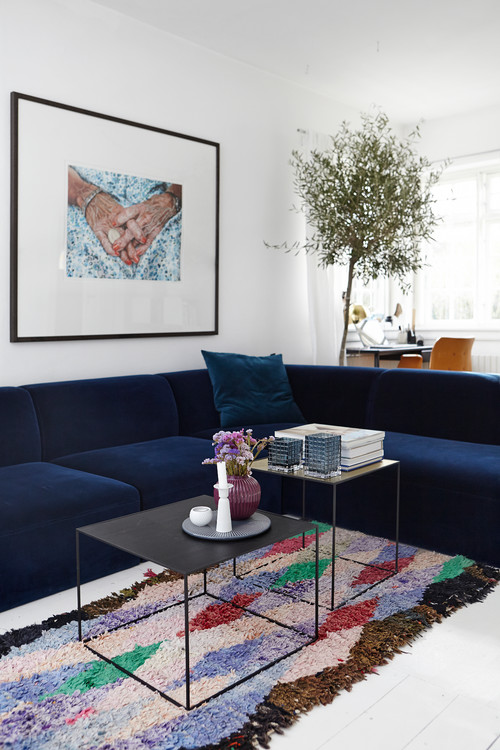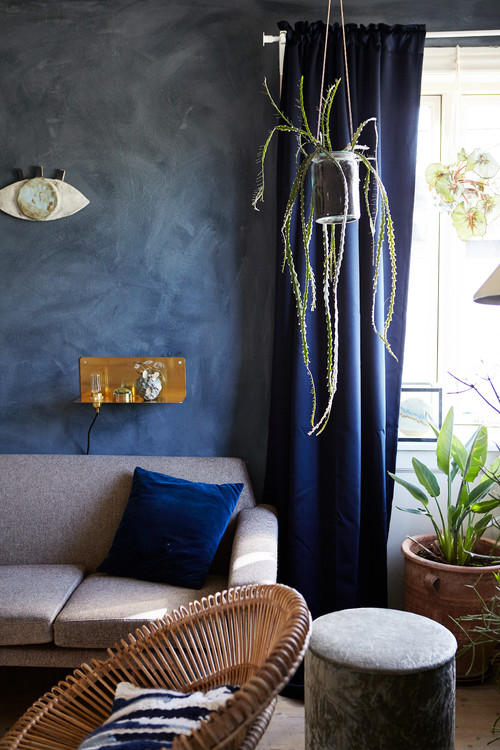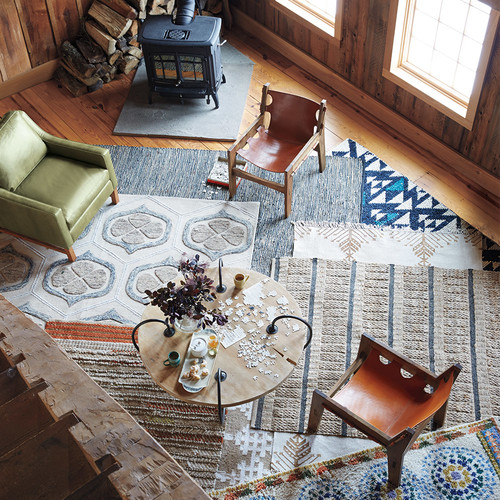It’s time to curl up indoors as the days get darker and darker, so why not take the opportunity to give your home a little lift? Here, we give you the definitive guide to getting your living room ready to face the cold months.
1. Increase the coziness
Before you start to spend the majority of your free time in the living room, you need some good basic furnishings. Make sure to introduce a soft material such as velvet or velour to the room. Not only are they beautiful and comfortable to sit on, but also among the trendiest materials for your home this autumn. Blogger Malene Marie Møller has gone for an entire sofa in dark blue velour.
Even just a small piece of velour makes a big difference! Kristina Sørensen from the blog Labdecor has sneaked a small blue velour cushion onto her couch. Velour or velvet, in blue tones, is a safe card when you are about to change the decor. It is the ultimate trend colour right now and creates a modern, uncluttered look, and adds warmth during the cold Nordic winter months. And the blue trend continues into 2017.
2. Freshen up the picture wall
When you spend many hours at home, it is important to have something beautiful to look at. Walls filled with pictures and artwork – so called picture walls – have been popular for a while now, so why not update it with photography? Opt for striking reportage photographs or dramatic theatre motives.
3. Soften the walls
Complement your picture wall with hangings and fabrics in soft wool or yarn. They give a change to sharp edges of the pictures, and the inviting textures create a warm ambiance. And wall hangings are not just a nice detail, but also an easy way to give your home an autumn update.
4. Warm wool in big amounts
It may sound like a given autumn and winter trend, but this season, keep an extra eye out for the softer things. It is definitely the more rounded shapes that stand at the forefront of interior trends this year – the cushions should be soft and as many as possible. Knitted and wool cushions fit in very well on a leather sofa, and do not forget to also add a warm blanket.
5. Invite nature
You might think that the healthy, vibrant colours and lush colour play belong to the spring and summer times, but the truth is that even during the winter months, we need to feel close to nature. Why not be inspired by the botanical trend of large, lush flowers even when it comes to wall decoration? One can never have too many flowers – check out these wall illustrations by by Nina Lardot.
6. Add a rug – or two
The feeling of putting your feet on a warm, fluffy rug on a cold winter day is hard to beat, so go for more rugs during the dark months. Not only do they make the rooms cozier, they also help to keep the heat. Feel free to mix rugs with different designs, but be sure to stick to similar colours to create a harmonious impression.
7. Make time for DIY projects
Does any of your larger living room furniture need to be replaced or updated? That could be fixed without spending a fortune. Consider using the winter months, while you spend a lot of time indoors anyway, to delve into small or big DIY projects.
Get more inspiration in The Local's Homes section
Come see more Nordic lifestyle, design and architecture over at houzz.dk and houzz.se.












 Please whitelist us to continue reading.
Please whitelist us to continue reading.